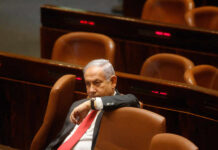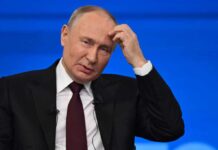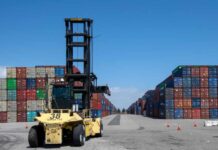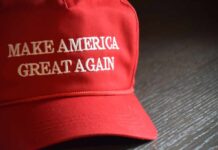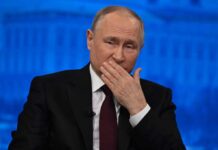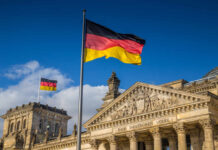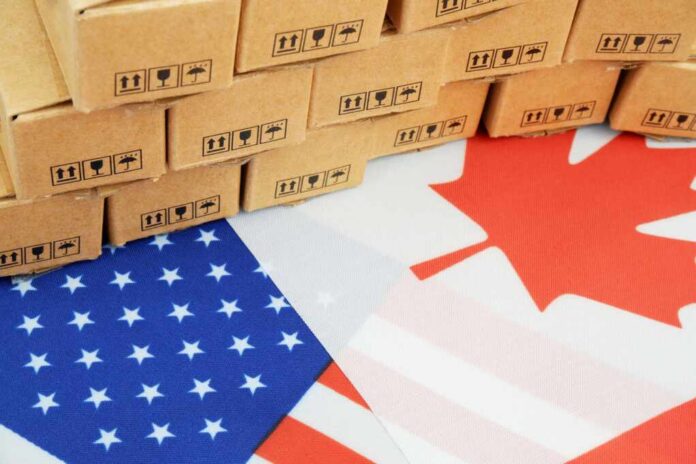
Canada has paused some counter tariffs on US goods while maintaining its stance that most trade protections remain firmly in place, creating uncertainty about the future of US-Canada trade relations.
At a Glance
- Canada has temporarily paused select counter tariffs against the United States, primarily affecting food processing, health, and manufacturing sectors
- Finance Minister Francois-Philippe Champagne insists 70% of the Can$60 billion tariffs remain active, pushing back against reports suggesting all tariffs were dropped
- This development follows discussions between Prime Minister Mark Carney and US Vice President JD Vance in Rome
- The pause is designed to help Canadian companies adjust their supply chains while maintaining negotiation leverage
- Opposition leader Pierre Poilievre has criticized the government for “quietly dropping” tariffs without public notification
Strategic Trade Pause Amid Ongoing Tensions
Canada has implemented a temporary pause on select counter tariffs against the United States, according to recent announcements published in the Canada Gazette. The affected sectors include vital components of the Canadian economy such as food processing, health products, and manufacturing. However, Finance Minister Francois-Philippe Champagne has firmly rejected claims that Canada is broadly retreating from its protective trade stance, emphasizing that the majority of tariff measures remain firmly in place.
The partial tariff relief comes shortly after high-level discussions between Canadian Prime Minister Mark Carney and US Vice President JD Vance during a meeting in Rome. Carney’s office characterized the discussions as focusing on “immediate trade pressures and the need to build a new economic and security relationship.”
You're a goldfish.
No offense. You, me, the whole lot of us — our mental hard drives are always at capacity from constantly spending too much time on this website consuming news.
We struggle to remember the full picture, even for stories that started just a few weeks ago. But…
— Isaac Saul (@Ike_Saul) April 24, 2025
Disputing Claims of Complete Tariff Elimination
The Canadian government has pushed back strongly against claims from Oxford Economics that suggested the country had effectively reduced its tariff rate to near zero. Champagne clarified that approximately 70% of the Can$60 billion (US$43 billion) in counter tariffs remain actively in place. This represents a substantial continuing economic response to US trade actions while still providing strategic relief in key sectors to allow businesses to adjust their operations.
Opposition leader Pierre Poilievre has seized on the tariff adjustments, accusing the Carney administration of making these changes without proper public notification or explanation. The opposition’s criticism highlights the political sensitivity surrounding trade policy with the United States, particularly as both nations navigate complex economic pressures and negotiate for favorable terms under the new US administration.
Broader International Context
The Canadian tariff pause occurs against a backdrop of evolving international trade dynamics. China’s recent success in negotiating favorable terms with the United States has prompted other nations, including Canada, to reconsider their trade negotiation tactics. Some countries are now exploring tougher stances in their discussions with the Trump administration, recognizing that firm positioning may yield better outcomes than immediate concessions.
For Canadian businesses, particularly in the automotive sector, the selective tariff relief provides a temporary reprieve as they work to adjust supply chains and production strategies. During the recent election, automakers were specifically offered tariff exemptions contingent on maintaining production and investment within Canada, demonstrating the government’s approach of using tariff policy as both defensive and strategic economic tools rather than purely retaliatory measures.
The United States continues to impose both general and sector-specific tariffs on Canadian goods, with some suspended pending further negotiations. This creates a complex trade environment where both nations are using partial tariff implementations and strategic pauses as negotiating leverage while working toward a more comprehensive economic relationship.



